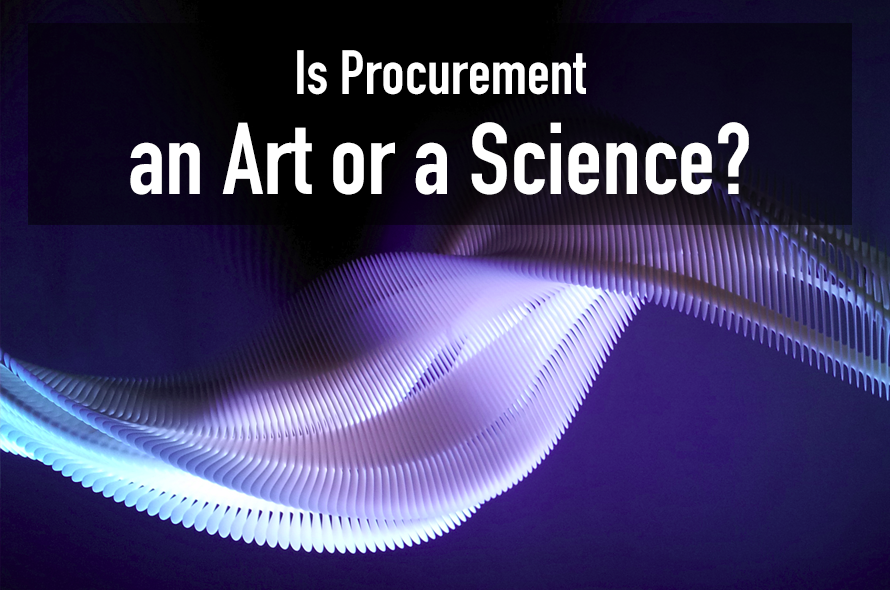Introduction
With the advent of precise sourcing models, strategic sourcing and category management, procurement has changed drastically in the past few years. In this special report by Spend Matters PRO, we explore these changes in procurement and see how procurement has become a process with increased structure and influence across direct and indirect categories.
Is procurement an art or a science? During the early part of my career, twenty years and more ago, it would certainly have been tempting to say “art.” Not that many of us were particularly creative, but there were certainly aspects of what we did that didn’t seem very scientific!
Identifying suppliers was a pretty hit and miss affair in the days before supplier networks or even Google. Going through a sourcing process was often a case of collecting some paper-based proposals (in response to a requirement document) and then trying to analyze them in a way that made some sense (enough, at least, to convince the CPO that my recommendation was sound). And as for measuring savings – well, for direct procurement in a manufacturing context we might well have had some form of standard prices with purchase price variances identified, but there was little attempt to explain what had driven that.
But in most organizations, there was little procurement involvement at all in terms of services and indirect costs. And if procurement did manage to gain some involvement, it was generally unstructured and there was little attempt to measure benefits.
Clearly, things have moved on considerably since those days. Strategic sourcing and category management brought something new in the way of standard processes – the 5,7, 9 step models and so on, introduced and loved by the big consulting firms. Yet even here, there was considerable freedom for category managers to interpret the process in their own way, and often work through it in a relatively unstructured manner.
But it may be that we’re seeing the dawn of a new level of structure in procurement activity, covering both direct and indirect activities. I’ve seen two examples in the last fortnight, from two very different organizations, where the “science” being applied to the procurement process was impressive and very much at the leading edge of what I’ve ever seen in terms of a highly structured and systemized approach.
In one case, the procurement organization has taken a “lean thinking” approach to sourcing, following a detailed project management process for every step. Even the pre-tendering stage is broken down into dozens of sub-activities around market engagement, clarification of requirements, contact with stakeholders, and so on.
The second example was even more striking. We’ll feature more on this when the firm involved have taken it beyond the current testing and launch phase, but the solution combines a strong sourcing workflow capability with financial management elements (budgeting, savings tracking and measurement) in a way I certainly haven’t seen before. So the workflow element takes the category manager through a highly structured process, starting with planning and budgets, and then creating category initiatives that drive the activity and reporting through the process.
There are strong stakeholder management checks and sign-offs, including agreement of plans, baselines and savings targets. Progress through the sourcing phase is tracked trough the different stages, but perhaps most interesting is the link post-contract award to actual supplier prices and cost. The system picks up actual pricing data from the ERP system, enabling accurate calculation of achieved savings against the previously agreed baseline. (Note however that this isn’t a sourcing tool – it doesn’t include RFX, auction or similar capability).
It’s a novel approach, and suggests two points to note. Firstly, savings measurement is still an area of weakness for many procurement functions, (notwithstanding some interesting solution options available now), but we expect that there will be more focus on robust tracking of savings as organizations want to see more real evidence of returns from their investment in procurement. Secondly, this tool – and the lean example we previously described – both mean that procurement staff have to work in a much more controlled and arguably constrained manner than their equivalents did twenty or even ten years ago. Steps are clearly defined throughout the process, with checks, sign-offs and controls.
Now that doesn’t fully negate the need for creative things at times – perhaps developing innovative commercial ideas or payment models. A certain amount of procurement and sourcing creativity can still be useful and valued. And the process-driven approach certainly doesn’t take away the need for strong and effective stakeholder engagement from the procurement function. However, putting this degree of structure, science and systemization into what was previously the procurement “art” does have some implications.
For instance, it might lead to organizations looking to handle some tasks via less skilled or less expensive manpower. In one case we’ve seen, this means a “nearshored” team, sitting in a lowcost part of the UK and handling an element of the standard process whilst the lead category managers sit in a more expensive location where the procurement customer is based. It may also mean a wider range of procurement jobs being available – fewer high-powered category managers, but more “semi-skilled” staff perhaps.
We’ll return to this topic early next year, with plans to report more fully on how this novel sourcing workflow/financial performance tracking combo is working in practice.
Further information on this topic and others can be found at the website: www.spendmatters.com. Reproduction of this publication in any form without prior written approval is forbidden. The information in this report has been obtained from sources believed to be reliable. Spend Matters, LLC disclaims all warranties as to the accuracy, completeness, or adequacy of such information and shall have no liability for errors, omissions, or inadequacies in the information contained herein or for interpretations thereof. The reader assumes sole responsibility for the selection of these materials to achieve its intended result. The opinions express herein are subject to change without notice. To purchase reprints of this document, please email info@spendmatters.com

